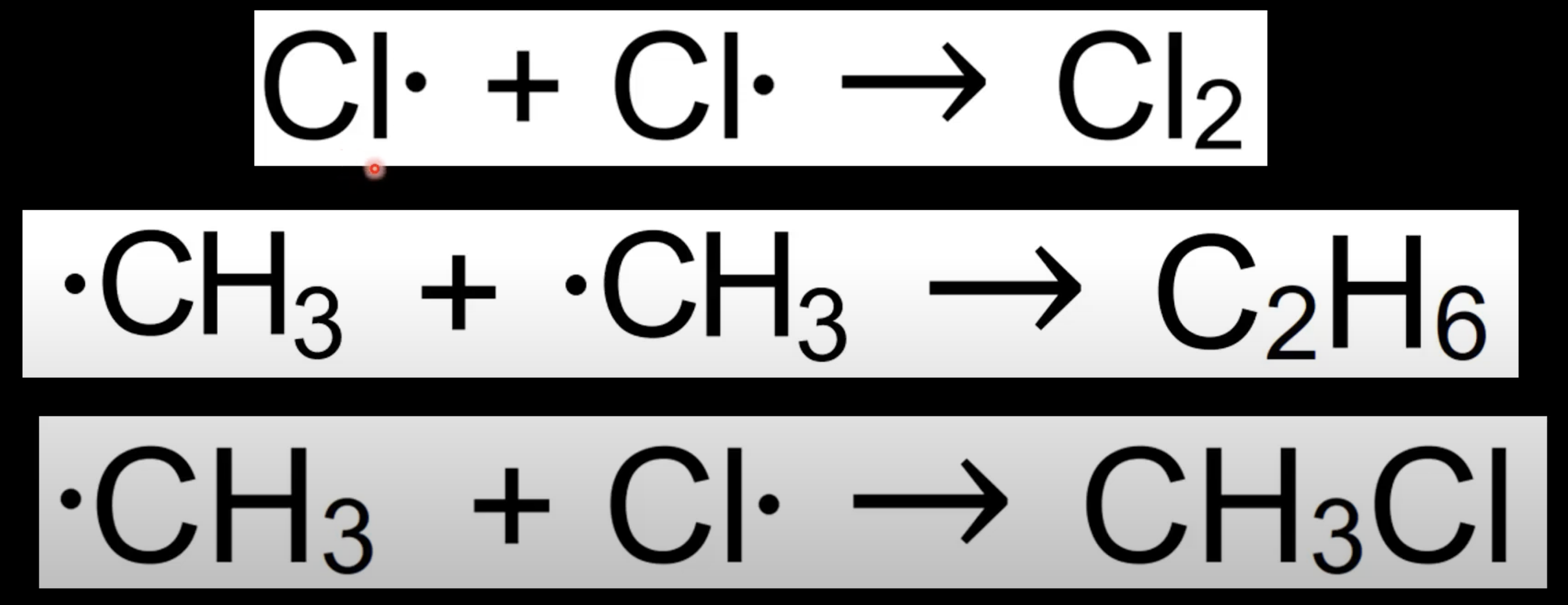R3.3.3 Free radical substitution reactions of the alkanes
0.0(0)
0.0(0)
Card Sorting
1/5
There's no tags or description
Looks like no tags are added yet.
Study Analytics
Name | Mastery | Learn | Test | Matching | Spaced |
|---|
No study sessions yet.
6 Terms
1
New cards
Why alkanes are unreactive
C–H bonds are nonpolar due to small electronegativity difference.
C–C and C–H bonds are strong with high bond enthalpies.
2
New cards
Free-radical substitution
Reaction where a radical replaces an atom in a molecule.
Occurs in presence of halogens and UV light.

3
New cards
Free radical definition
Species with unpaired electron, shown by a dot (•).
Highly reactive and short-lived.

4
New cards
Initiation step
UV light breaks Cl–Cl bond homolytically.
Produces two Cl• radicals.
Starts the reaction chain.

5
New cards
Propagation step
Radicals react with molecules to form new radicals.
Keeps chain going.
Example: CH₄ + Cl• → CH₃• + HCl.

6
New cards
Termination step
Radicals combine to end chain.
Removes reactive species.
Example: Cl• + CH₃• → CH₃Cl.
